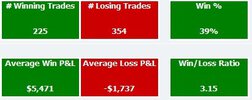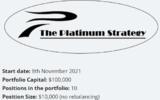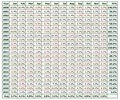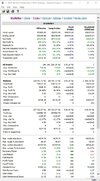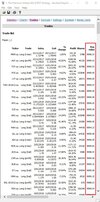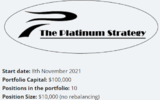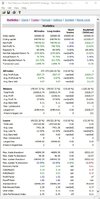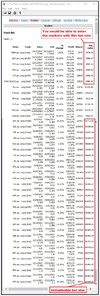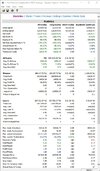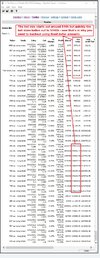MovingAverage
Just a retail hack
- Joined
- 23 January 2010
- Posts
- 1,315
- Reactions
- 2,565
Fiddling with your position sizing to get acceptable results is just masking an underlying system with mediocre performance.Having increased bets concentrated on a few positions insures when you have a "win" you have a "decent win".
Skate.

